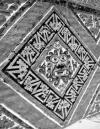Resumen
El Proyecto Arqueológico Huaca de la Luna está organizado encuatro áreas: arqueología, conservación, uso social y desarrollocomunitario, con base en una política social y ambientalmenteresponsable, compatible con el nivel académico y científico propiode este tipo de intervención. El artículo presenta los resultadosde un proceso de investigación iniciado en 1991 y que continúacon su programa hasta el 2016, con base en un Plan de Manejo yConservación organizado el año pasado. Explica cómo un equipointerdisciplinario liderado por un arqueólogo y un conservador,conscientes de su rol y responsabilidad ética y profesional, planifica,ejecuta y evalúa en conjunto la intervención de un recursocultural pre inca construido en tierra, con superficies policromadasde intensos colores y expuesto a severas condiciones ambientales,sociales y económicas que impactan su unidad geohistórica.En este contexto, se presenta una experiencia inédita en el Perú,una alternativa de gestión que propone el manejo responsable delmedio ambiente como un pre requisito para la conservación deun monumento arqueológico; la ejecución de un proceso conservadoren su mínima intervención y respetuosa de la autenticidaddel documento, y la administración de un creciente y preocupanteflujo turístico, que implican en conjunto un estudio integral paraestablecer la capacidad de carga de estas frágiles estructuras ysuperficies en tierra.
La revista Apuntes se encuentra registrada bajo la licencia Creative Commons Reconocimiento 4.0 Internacional. Por lo tanto, esta obra se puede reproducir, distribuir y comunicar públicamente en formato digital, siempre que se reconozca el nombre de los autores y a la Pontificia Universidad Javeriana. Se permite citar, adaptar, transformar, autoarchivar, republicar y crear a partir del material, para cualquier finalidad (incluso comercial), siempre que se reconozca adecuadamente la autoría, se proporcione un enlace a la obra original y se indique si se han realizado cambios. La Pontificia Universidad Javeriana no retiene los derechos sobre las obras publicadas y los contenidos son responsabilidad exclusiva de los autores, quienes conservan sus derechos morales, intelectuales, de privacidad y publicidad.
El aval sobre la intervención de la obra (revisión, corrección de estilo, traducción, diagramación) y su posterior divulgación se otorga mediante una licencia de uso y no a través de una cesión de derechos, lo que representa que la revista y la Pontificia Universidad Javeriana se eximen de cualquier responsabilidad que se pueda derivar de una mala práctica ética por parte de los autores. En consecuencia de la protección brindada por la licencia de uso, la revista no se encuentra en la obligación de publicar retractaciones o modificar la información ya publicada, a no ser que la errata surja del proceso de gestión editorial. La publicación de contenidos en esta revista no representa regalías para los contribuyentes.


